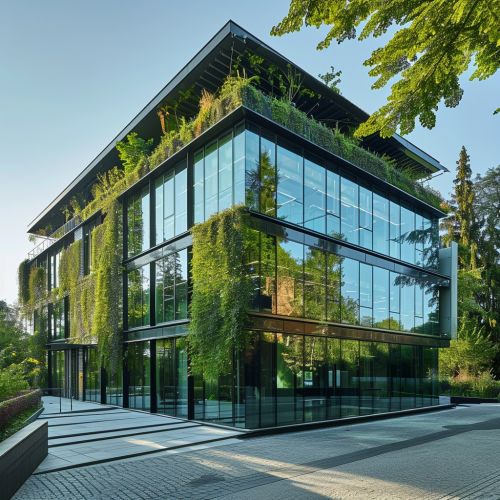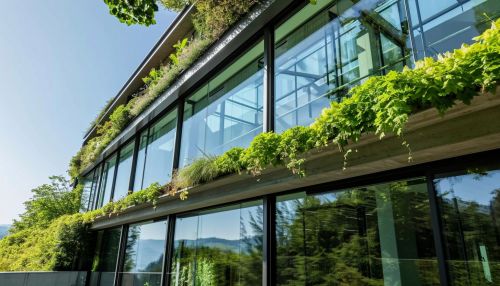Green architecture
Introduction
Green architecture, also known as sustainable architecture or green building, refers to the practice of creating structures and using processes that are environmentally responsible and resource-efficient. This approach to architecture takes into consideration every aspect of the construction process, from design and building to operation and demolition. The goal of green architecture is to minimize the environmental impact of building, while creating a healthier and more productive environment for people to live and work in.
Principles of Green Architecture
The principles of green architecture are based on the idea of sustainability, which is the capacity to endure. This means that green architecture aims to create buildings that will continue to be economically viable and will not harm the environment or the people living in them over the long term. The key principles of green architecture include:
- Energy efficiency: This involves designing buildings to use less energy, both in their construction and in their operation. This can be achieved through a variety of means, such as using high-efficiency appliances and lighting, insulating buildings to reduce heat loss or gain, and using renewable energy sources such as solar power.
- Water efficiency: Green architecture aims to reduce water use and protect water quality. This can be done through efficient fixtures and appliances, rainwater harvesting, and using plants that require less water in the landscape.
- Resource efficiency: This involves using materials that are sustainable, such as recycled content materials, rapidly renewable materials, and materials that are produced and harvested in a sustainable way.
- Indoor environmental quality: Green architecture aims to create a healthy indoor environment by using materials that emit few or no toxins and by controlling indoor air humidity and temperature.


Benefits of Green Architecture
There are numerous benefits to green architecture, both for individuals and for society as a whole. These include:
- Environmental impact: Green architecture can significantly reduce the impact of buildings on the environment by reducing energy use, water use, and waste.
- Health and comfort: Green buildings often provide a more comfortable and healthier living environment. They typically have better air quality, more natural light, and a more pleasant and productive living and working environment.
- Economic benefits: Although green buildings can sometimes cost more to build, they often result in significant savings over the life of the building through reduced energy and water costs.
Challenges and Criticisms of Green Architecture
Despite its many benefits, green architecture also faces several challenges and criticisms. Some of these include:
- Cost: Green buildings can sometimes cost more to build than conventional buildings. However, these costs can often be offset by the savings in energy and water costs over the life of the building.
- Greenwashing: This is the practice of making misleading or unsubstantiated claims about the environmental benefits of a product or service. Some critics argue that some buildings are labeled as "green" without truly meeting the principles of green architecture.
- Complexity: Designing and building green buildings can be more complex than conventional buildings, requiring specialized knowledge and skills.
Future of Green Architecture
The future of green architecture looks promising, with increasing interest and investment in sustainable building practices. Advances in technology and design are making it easier and more affordable to build green buildings. At the same time, there is growing recognition of the importance of sustainable practices in mitigating the effects of climate change and preserving our planet for future generations.
